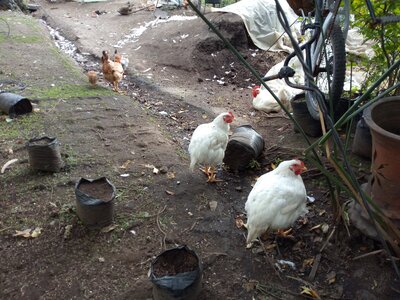Parront
Crossing the Road
Looks normal to me for a heritage breed.Wow, what a sorry looking carcass, just like in the 1920s-1930s before the broiler industry took over. How about introducing Asil blood in your lines? they produce wider breast cuts, there was an article on crossing them with RIR and Barred Rocks way back before the Cornish cross became popular.
Here is the study, but they used a Shamo instead of Asil(about the same type) and the crossed produced pretty good looking birds even when crossed with skiny Leghorns
https://scholarspace.manoa.hawaii.edu/bitstream/10125/53841/CtahrpsAgExp81.pdf
some pics of the work done way back in the 1930s
View attachment 2224039
View attachment 2224041
View attachment 2224042
Shamo/Barred Rock vs Pure Barred Rock(the first two pictures from the left)


